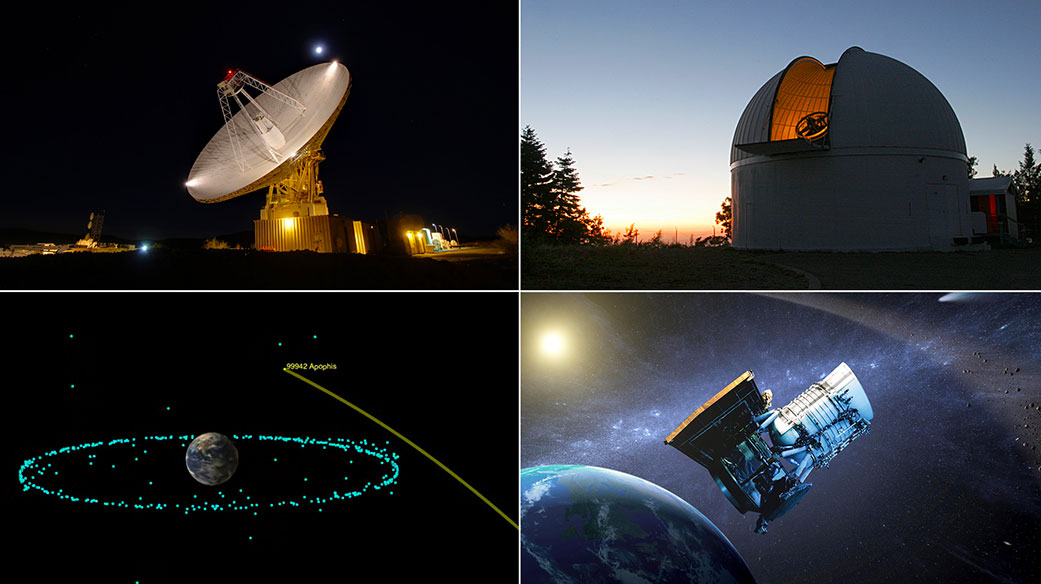Asteroid Apophis: No Doomsday in 2029, but Space Rock Still Holds Fascination
These days, a question is running in everyone’s mind all over the world that will the year 2029 be the Doomsday and is Asteroid Apophis going to hit Earth? Imagine a behemoth in space, the size of three Empire State Buildings stacked end-to-end, hurtling on a path that sometimes brings it unnervingly close to Earth. That’s Apophis, an asteroid that once had scientists and the public on edge with a projected impact threat in 2029. Thankfully, those fears have been laid to rest.
Discovered in 2004, Apophis quickly gained notoriety due to its predicted close encounter with Earth in 2029. Initial calculations gave a worrying 2.7% chance of impact, sparking widespread concern. But as astronomers gathered more data and refined their calculations, the probability plummeted to a negligible 0.094% by 2015. By 2021, the threat of a 2029 collision was completely ruled out.
NASA’s OSIRIS-REx spacecraft, after successfully sampling asteroid Bennu, is on a new mission: studying near-Earth asteroid Apophis. This April 2029 encounter promises unique insights.
- Apophis: Named after the Egyptian god of chaos, this 370-meter asteroid will make a record-close approach to Earth in 2029, visible to the naked eye.
- OSIRIS-APEX: Renamed and refueled, the spacecraft will study Apophis’s surface and track Earth’s gravitational effects on its orbit and rotation.
- Planetary defense: Observing Apophis, a common “S-type” asteroid, helps improve our understanding of potential threats and planetary defense strategies.
- Origins: The mission also offers a rare glimpse into the formation of planets, studying how asteroids evolve under tidal forces and debris accumulation.
- Extended observation: After the close encounter, OSIRIS-APEX will remain with Apophis for 18 months, documenting the long-term effects of Earth’s gravity.
This exciting mission promises to significantly advance our understanding of near-Earth asteroids and their interactions with our planet. Stay tuned for updates as NASA unravels the mysteries of Apophis!
While Earth is safe from Apophis in 2029, it will still make a relatively close approach, passing within 31,000 kilometers (19,266 miles) – closer than the distance of geosynchronous satellites. This flyby will provide valuable data for studying the asteroid in detail, offering scientists a unique opportunity to understand its composition, rotation, and surface features.
There remains a 0.01% chance of an impact by 2068, which astronomers are carefully monitoring. However, this incredibly low probability shouldn’t distract from the fascinating aspects of Apophis.
Apophis is a rocky reminder of our solar system’s formation billions of years ago. Composed of a mix of rock and metal, it’s a remnant of the primordial soup that swirled around the newborn sun. Asteroids like Apophis offer valuable clues to the origins and evolution of our solar system, their craters and scars whispering tales of ancient collisions and close encounters.
While the doomsday scenario associated with Apophis in 2029 has faded, the asteroid’s close flyby offers an exciting opportunity for scientific exploration. It serves as a reminder that the universe is a dynamic place, with celestial bodies constantly in motion. While the immediate risk posed by Apophis is minimal, continued research and observation of near-Earth objects like this are crucial for understanding our place in the cosmos and preparing for future potential threats.
So, while Apophis may no longer be a cosmic concern for 2029, it remains a fascinating object that showcases the power of scientific advancements and the ongoing quest to understand the wonders of our universe.






Post A Comment:
0 comments: